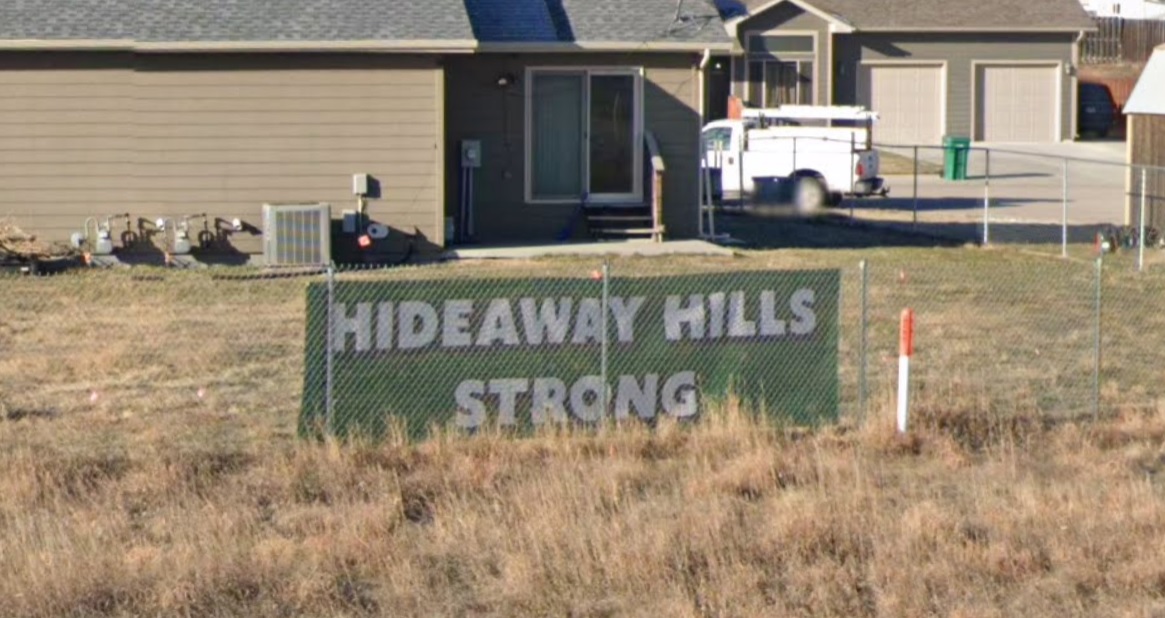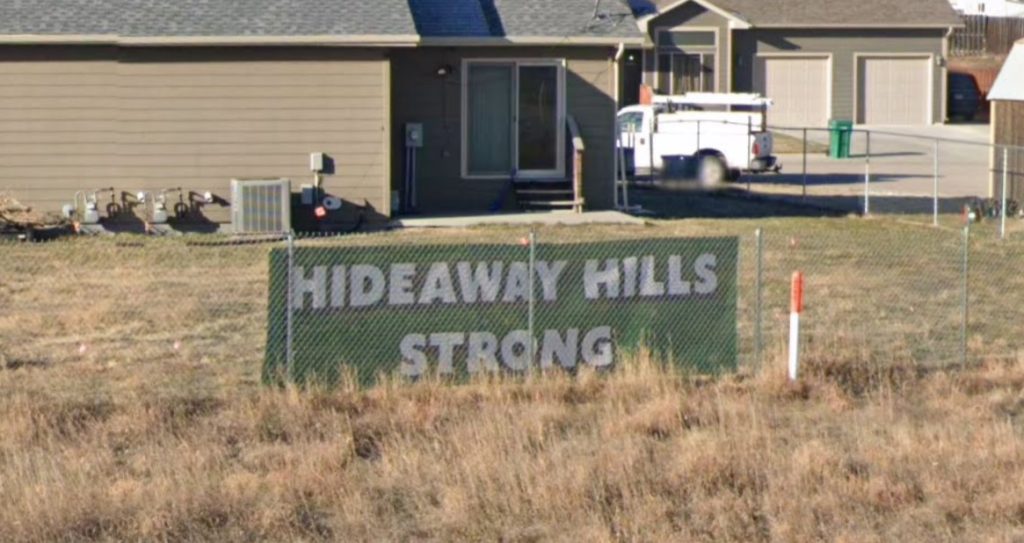RAPID CITY, S.D. – Professional engineers studying the Hideaway Hills subdivision in Black Hawk, S.D., site of a 2020 sinkhole over an abandoned state-operated gypsum mine, say the remaining homeowners should leave because soils under and around their homes contain gypsum and present a very serious threat to their lives and property.
Those opinions are contained in two reports on geotechnical testing and core sampling commissioned by attorneys at the Fox Rothschild law firm, which represents the homeowners in a class-action lawsuit against the state of South Dakota set for trial later this year.
“What these reports show is that this is no longer a ‘disaster waiting to happen,’ but instead a disaster that will happen,” says attorney Kathleen Barrow, who along with attorney David Grant Crooks represents the families.
The studies, performed by two Wyoming-based engineering firms, reveal three discrete but interconnected problems for the 158 homes at Hideaway Hills, chief among them the presence of pulverized gypsum in the subsurface soils under homes and roads, not just in the abandoned mine below the surface. Testing shows the soils utilized by the state for mine reclamation contain an average of about 25 percent pulverized gypsum, with a high of 80 percent. Some residents are living in areas with 40 feet of fill dirt, a majority of which is pulverized gypsum.
“Gypsum acts like crushed sugar cubes,” Mr. Crooks says. “So, imagine what’s going to happen under and around the homes and streets there when something such as that interacts with water. The problem with the soils in the subsurface is that there could be a sudden collapse of the subsurface at any time. Further, the fill dirt in the subsurface is failing to support utilities, like water and sewer lines, causing fractures, sags and deformation. If the force main sewer line breaks, it will spill sewage into the water in the underground mine and pollute aquifers in the ground water.”
The engineers conclude that stabilizing the homes and streets at Hideaway Hills is not feasible and that the best use of the land is to demolish the homes and mitigate the mine by turning the area into open space.
The reports follow the revelation last fall that underground video testing by the Northdale Sanitary District showed millions of gallons of drinking water and sewage leak into the soils and abandoned mine every year, further eroding the gypsum and creating an even more dangerous condition.
For generations, South Dakota operated gypsum mines to support its for-profit cement company. In 1994, when the state sold the land to a private developer, it retained rights to the subsurface minerals.
The case is Andrew Morse and John and Emily Clarke et al. v. State of South Dakota, No. 46CIV-20-000295 in the Meade County 4th Judicial District.
Order on reopening the class-C












